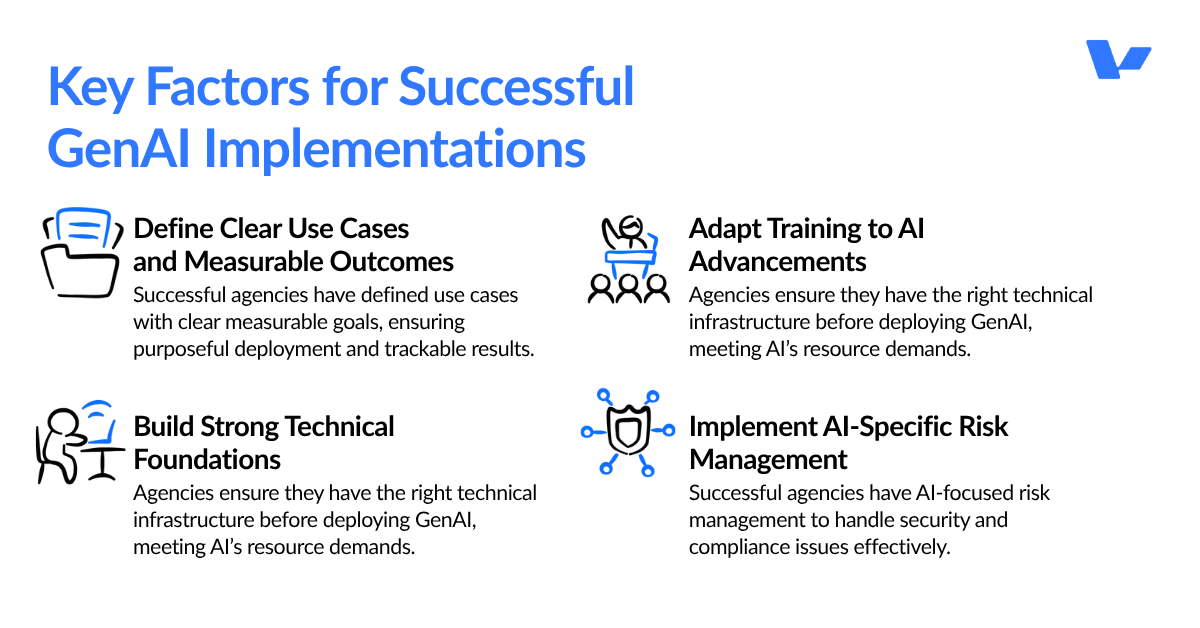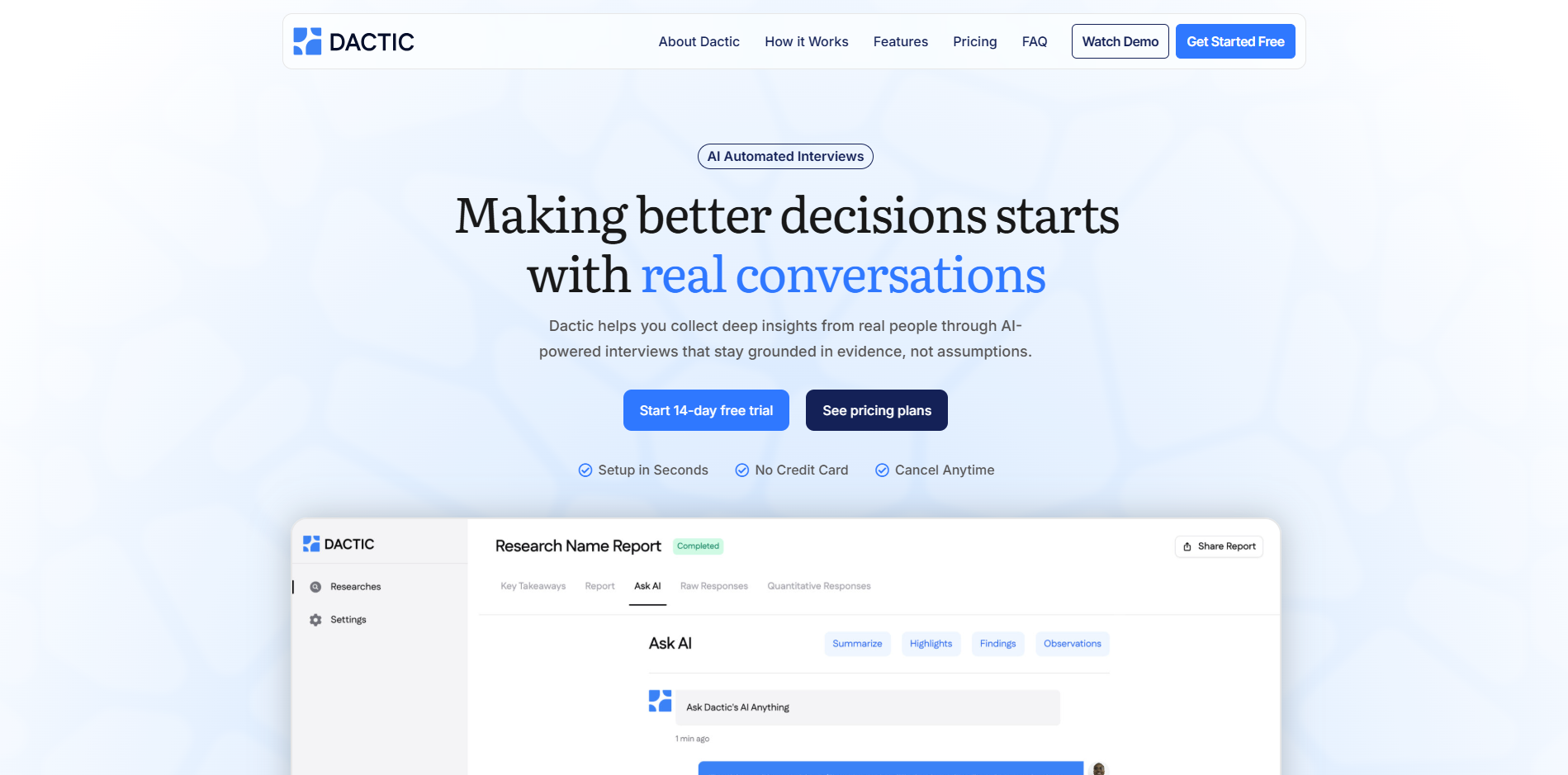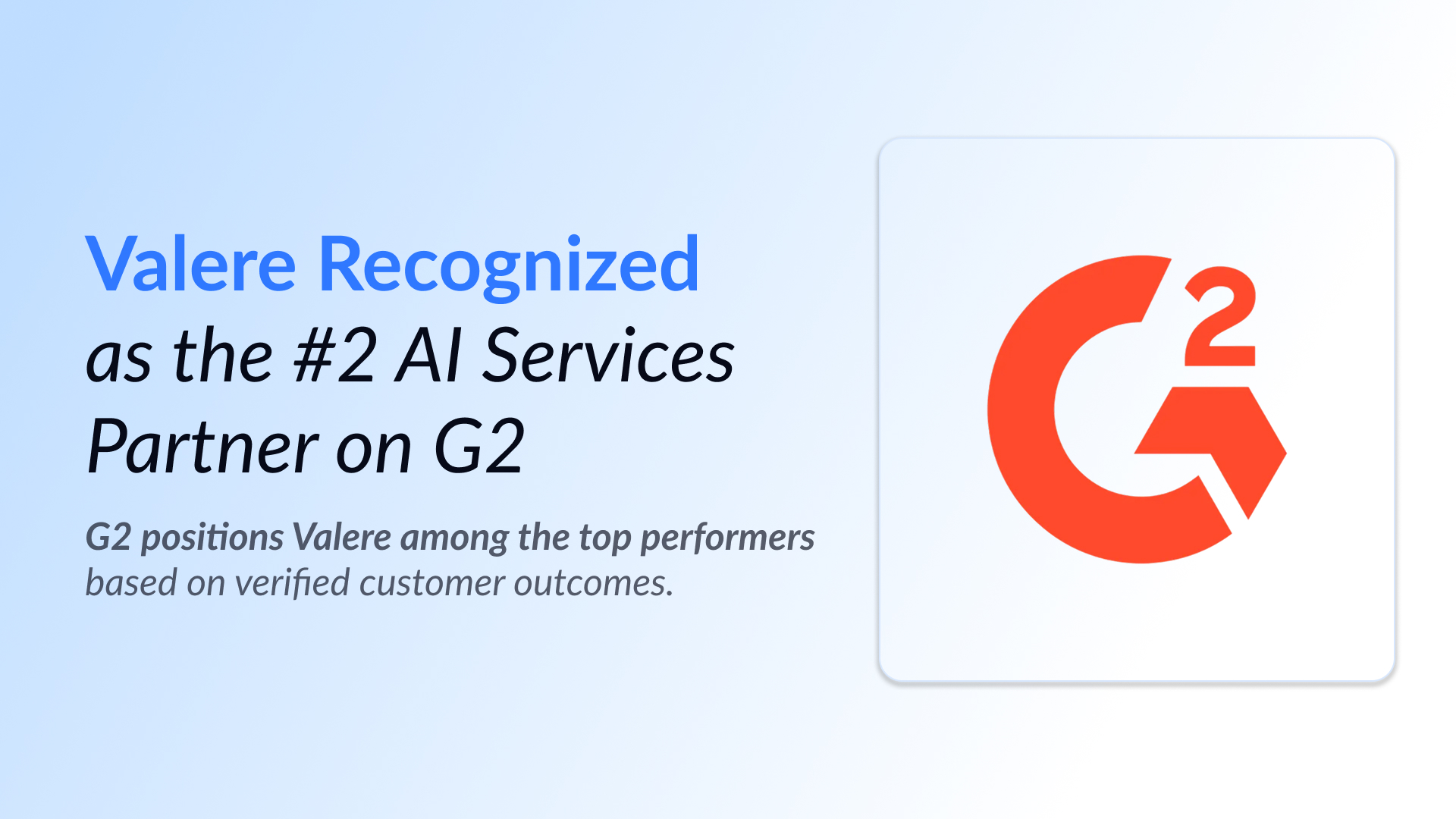The numbers don’t lie. Federal agencies went from 32 generative AI use cases in 2023 to 282 in 2024 (a nine-fold increase that would make any startup jealous). But here’s what the latest GAO report really tells us: we’re witnessing the messy, complicated reality of digital transformation at scale.
As someone who’s spent years helping organizations navigate AI implementation, I can tell you that explosive growth numbers often hide deeper challenges. The federal government’s GenAI journey isn’t just about cool tech: it’s a masterclass in what happens when bureaucracy meets bleeding-edge innovation.
The Numbers Tell a Different Story
Let’s start with what’s actually happening. The GAO reviewed 11 federal agencies and found that overall AI use cases nearly doubled from 571 to 1,110. That’s impressive growth by any measure. But the generative AI explosion from 32 to 282 cases? That’s the kind of hockey stick growth that gets C-suite attention.
Here’s where it gets interesting: 61% of these GenAI implementations focus on mission-enabling functions. Translation? Agencies are using AI for internal housekeeping: improving written communications, streamlining information access, and tracking program status. It’s not sexy, but it’s smart.
The Department of Health and Human Services led the pack with 116 generative AI use cases, followed by Veterans Affairs with 27. These aren’t vanity projects. HHS is using GenAI to extract information from publications and identify polio outbreaks in previously thought polio-free areas. VA is automating medical imaging processes to enhance diagnostic services for veterans.
The Reality Check: Why Implementation Is Harder Than Innovation
The real story isn’t in the growth numbers. It’s in the challenges. Ten out of twelve agencies told GAO that existing federal policies present obstacles to GenAI adoption. That’s not a bug; it’s a feature of working within regulatory frameworks designed for a pre-AI world.
The Policy Maze
Agencies are caught between innovation and compliance. Existing data privacy policies, cybersecurity requirements, and IT acquisition rules weren’t written with GenAI in mind. It’s like trying to drive a Tesla through roads built for horse-drawn carriages: technically possible, but you’ll hit every pothole.
The Federal Risk and Authorization Management Program (FedRAMP) authorization process is causing delays for agencies trying to acquire commercial GenAI products. This isn’t bureaucratic incompetence, it’s the inevitable friction when cutting-edge technology meets established security protocols.
Resource Reality
Eight agencies reported challenges accessing the computational and technical resources GenAI demands. DOD and NASA officials specifically mentioned being limited by advanced computing infrastructure requirements. Seven agencies cited funding challenges, from hiring GenAI experts to balancing AI investments with other IT modernization efforts.
This resource crunch isn’t unique to government. Every organization implementing GenAI faces the same compute-intensive reality. The difference? Private companies can make faster procurement decisions and budget adjustments.
The Workforce Gap
Six agencies struggled with attracting and developing GenAI expertise. They’re competing with private sector salaries while dealing with federal hiring constraints. NASA officials highlighted the challenge of maintaining training content as the technology rapidly evolves—a problem that resonates across industries.
What’s Actually Working: Collaboration as a Force Multiplier
Despite the challenges, federal agencies are finding creative solutions through collaboration. The Federal CIO Council’s Innovation Committee is leading an initiative involving GSA, DOE, NSF, and NOAA to create a government-wide approach for sharing AI resources.
This collaborative model makes sense. Instead of each agency building GenAI capabilities from scratch, they’re treating AI development as a federal enterprise. It’s efficient resource allocation disguised as bureaucratic coordination.
GSA’s Federal AI Hackathon represents another smart approach: bringing together federal entities to optimize government websites and digital services using GenAI tools. These aren’t theoretical exercises; they’re practical problem-solving sessions that generate real solutions.
The Security Paradox
Here’s what caught my attention: all twelve agencies that allow GenAI use have implemented restrictions. GSA and DHS limit commercial GenAI to publicly available information only. VA prohibits web-based GenAI services with sensitive data.
This cautious approach reflects a mature understanding of GenAI risks. DOD officials noted that GenAI models could aggregate unclassified information and unintentionally output classified material. That’s not paranoia—it’s risk management based on actual AI capabilities.
The challenge isn’t whether to implement security measures, but how to balance security with functionality. Too restrictive, and you cripple innovation. Too permissive, and you create security vulnerabilities.
Future-Proofing Insights: What the Data Really Reveals
The GAO report offers three critical insights for future-proofing federal GenAI initiatives:
1. Policy Evolution Must Match Technology Evolution
OMB’s April 2025 memorandum M-25-21 represents a policy framework trying to keep pace with technological change. It requires agencies to develop generative AI policies with safeguards and oversight mechanisms. This isn’t just regulatory compliance—it’s adaptive governance.
The key insight? Successful GenAI implementation requires policy frameworks that can evolve as quickly as the technology itself. Static regulations will always lag behind dynamic capabilities.
2. Collaborative Infrastructure Beats Individual Excellence
The most successful federal GenAI initiatives involve multiple agencies sharing resources and expertise. DOI’s collaboration with USDA Forest Service on wildfire management GenAI applications demonstrates how cross-agency cooperation can tackle complex challenges that individual agencies can’t solve alone.
This collaborative model could revolutionize how government approaches emerging technologies. Instead of reinventing solutions across departments, agencies can specialize and share capabilities.
3. Implementation Strategy Matters More Than Technology Selection

The report reveals that 30% of GenAI use cases are still in the “initiated” phase, where needs are identified but implementation hasn’t begun. Another 27% are in acquisition or development phases.
This distribution suggests that agencies understand GenAI’s potential but struggle with execution. The technology isn’t the bottleneck—implementation strategy is.
The Metrics That Matter

Let’s talk about success measurement. The GAO report focuses on use case counts and development stages, but the real metrics are operational impact and user adoption.
Agencies reporting successful GenAI implementations share common characteristics:
- Clear use case definition with measurable outcomes
- Adequate technical infrastructure before deployment
- Staff training programs that evolve with technology capabilities
- Risk management frameworks specific to GenAI applications
The agencies struggling with implementation often lack one or more of these elements. It’s not about having the latest AI models, it’s about having the organizational capability to deploy them effectively.
What This Means for the Broader Market
The federal government’s GenAI journey offers insights relevant beyond the Beltway. Large organizations everywhere face similar challenges: legacy policy frameworks, resource constraints, workforce development needs, and security requirements.
The collaborative approach emerging in federal agencies could inform private sector strategies. Instead of every company building comprehensive AI capabilities internally, we might see more industry consortiums and shared AI infrastructure.
The emphasis on mission-enabling applications also suggests that GenAI’s immediate value lies in operational efficiency rather than revolutionary transformation. Companies expecting AI to completely transform their business overnight might want to adjust expectations.
The Road Ahead
Federal agencies are implementing GenAI at unprecedented speed while navigating unprecedented complexity. The nine-fold increase in use cases represents genuine progress, but the implementation challenges reveal the hard work still ahead.
The most successful agencies aren’t necessarily the ones with the most use cases—they’re the ones building sustainable capabilities that can evolve with the technology. They’re investing in workforce development, establishing collaborative relationships, and creating policy frameworks that enable innovation while managing risk.
For those of us in the AI transformation business, the federal government’s experience offers valuable lessons. Rapid adoption without proper infrastructure leads to implementation challenges. Collaborative approaches can accelerate capability development. And security considerations must be built into AI systems from the beginning, not bolted on afterward.
The state of GenAI in federal government isn’t just about government efficiency, it’s a preview of how large, complex organizations will navigate the AI transformation over the next decade. The agencies getting it right today are building the playbook everyone else will follow tomorrow.
The question isn’t whether federal agencies will successfully implement GenAI at scale. The question is how quickly they can build the organizational capabilities to match their technological ambitions. Based on what we’re seeing, that transformation is already underway.
Ready to unlock the full potential of AI Agents in your enterprise in 2025? Contact us to learn more about how Valere can propel you on your AI journey.



